Deep in the thicket of civilian gun free Europe, there lies an unconquered patch of ground that fiercely withstands the onslaught of the socialist powers that be, the reigning dark lords of the various EU governments. It is the personal collection of a gentleman by the name of Jacky Comhair and it is maintained to this day. He is located in Werm, and is quote well known throughout the gun community, even bringing the American ambassador on a tour of his collection. Although the small arms section of it (and they are mostly all working, no replicas or dewats here) is very extensive, the collection is also fabulous for its war memorabilia and vehicles but those are beyond the scope of this article. These photos were kindly forwarded to TFB by a very generous reader who is currently working for the DOD and was kind enough to arrange for this collector highlight. This is an excerpt of his experiences moving to Europe and dealing with the firearms laws there.
When I first moved to Belgium, I shipped my guns (at the time, I brought an EA Witness .45, Anschutz 1913 comp rifle, Anschutz Super Air 2002 Air Rifle, an HK USC .45, and a Kel-Tec .32) via hold baggage and not with my household goods after consulting with the State Department. As it turns out, the State Department was wrong and my guns were initially confiscated by the Gendarmerie at SHAPE, Mons, Belgium. Apparently, because my guns arrived by air and not by sea (like my household goods), the Gendarmerie said it violated some sort of importation rule. However, all I had to do was file registration paperwork and include a letter from a US shooting club of my lawful participation in a shooting sport. USA Shooting’s Dave Johnson helped me out in this regard by writing a letter detailing my involvement with competitive rifle shooting in America. Three months later, I received a call that my guns were ready to be picked up and all was ok. I proceeded to join a local shooting club in Tongeren, Belgium and I quickly got connected with numerous matches across the country. I applied for a European Union firearms pass (the major prerequisite being a Belgian firearms permit) shortly thereafter and was soon shooting with a club in Aachen, Germany as well. Gun transport inBelgium just involved keeping your gun in a locked case and separate from ammunition while traveling. Around 2007, the laws in Belgium became more restrictive and I had to start carrying around a memorandum from my local Security Forces unit stating that I did not have a criminal background and was in good standing with the US military.
As an afterthought, he adds that-
Belgian, German, and EU law compliance were irrespective of my DoD status. All EU countries assume someone applying for a gun permit has “never” fired a gun before, even if you can provide countless evidence to the contrary. Essentially, I was given no breaks for a being an American military member and had to go through the same process as any EU citizen.
With that coming from the American perspective of moving to Belgium, here is a little explaining of Belgian firearms laws from Theo T, a Belgian enthusiast (I will not try and explain them, much less understand them!) –
Although some politicians want it otherwise, there hasn’t been much change in the firearms law. A Full Auto is Belgium an illegal and forbidden weapon . The only possibility to own one is indeed to have a collectors licence . But that is not always as simple as it seems. You have to make a request of the Governor of your province mentioning in which category you want to start a collection ( pe: ww2, brand, type …) If the FA fits in your category it’s possible to get you one . But you are not allowed to fire it, only if needed for maintenance or for testing ( by buy or sell )
For a FA post 1945 you may have only 10 rounds accept if you also have a collectors licence for this kind of ammo ( every licence cost you 300 euro/5 years). Weird ? This is Belgium! For the stocking of your guns you have to have an approved room, well secured with enforced doors and windows . You also need to install an approved alarm. Another way to keep the FA, you earned legally before, was to let it rebuild to a SA with official approval of course and authorization model 4 ( same as for SA rifles, revolvers and large caliber pistols ) , or to let it officially demilitarize, no authorization required.
Now the things that have changed.
There was until May 2013 a category of weapons that doesn’t need any kind of registration : the so-called HFD list .
H: Historical ( like my Schmidt-Rubin, but mine was registered so I could take it to the range )
F: Folkloristic ( like the arms used to shoot “de UM” , a traditional yearly competition between the Dutch and the Flemish Limburgs. )
D: Decorative ( In use for parades)You could only have these in your possession without ammo .
Until some lunatic in 2012 started shooting one at the market place in Liége.
Reaction of our minister of law : Every firearm must be registered !! Ever since then there haven’t been any assaults in Belgium!
Our national gun association is still discussing this in court. The verdict is expected in late 2015.Shades of gray ?
You can be damned sure there is a lot of gray, dark gray and black in Belgium ! But not at my place ! For a valorous citizen as myself it would be a very bad investment . We have more to loose than to gain .
In the ensuing photographs, I’ve done my best job at captioning the various small arms displayed. However, a lot of the particular models and variants have eluded me, so if I’ve mistaken something or forgot a firearm that is truly significant, feel free to add it in with the comments.
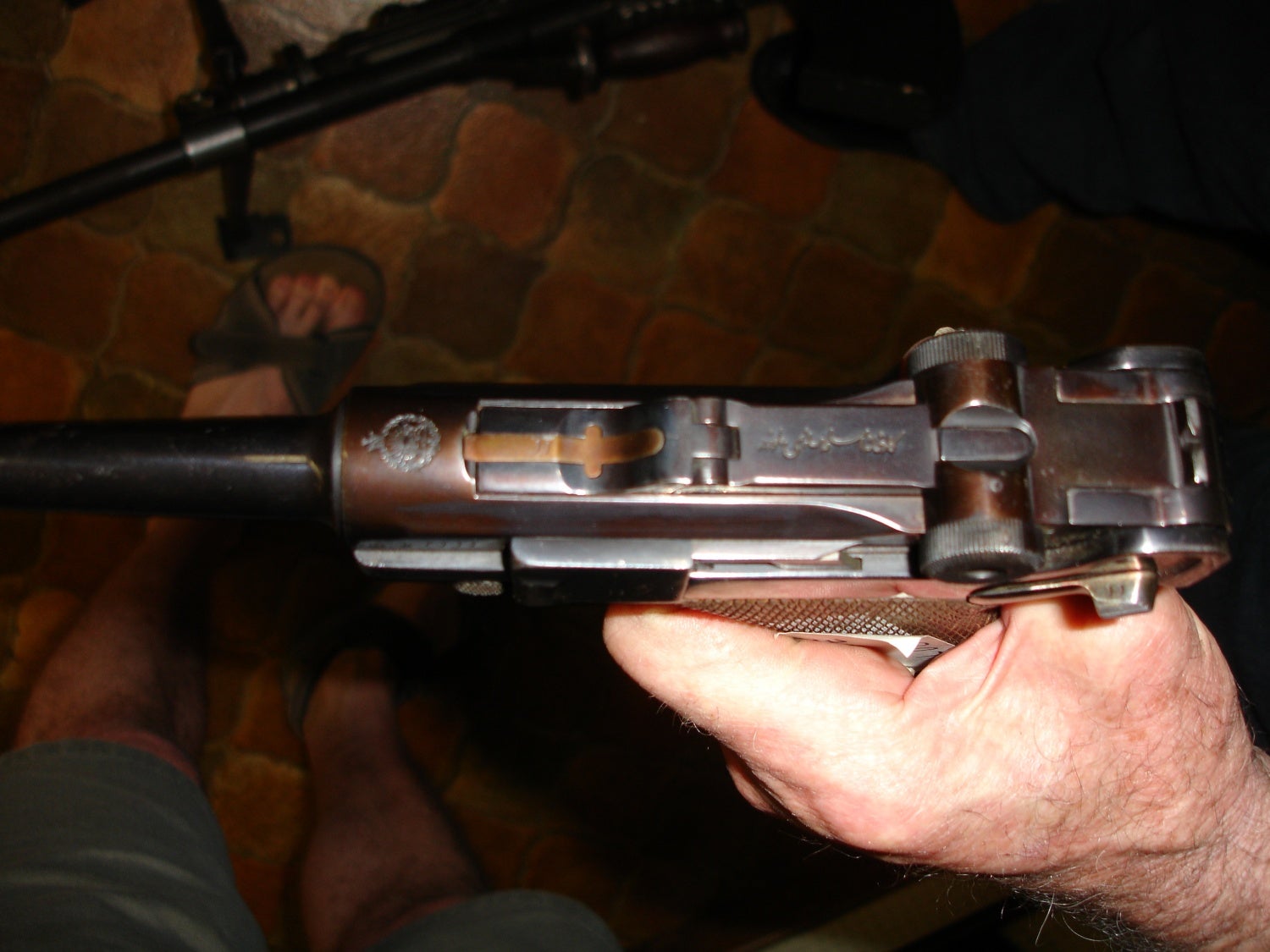
A Luger that somehow found its way to modern day Iran and then back to Belgium, the inscription on the toggle lock is in Farsi, or Persian.
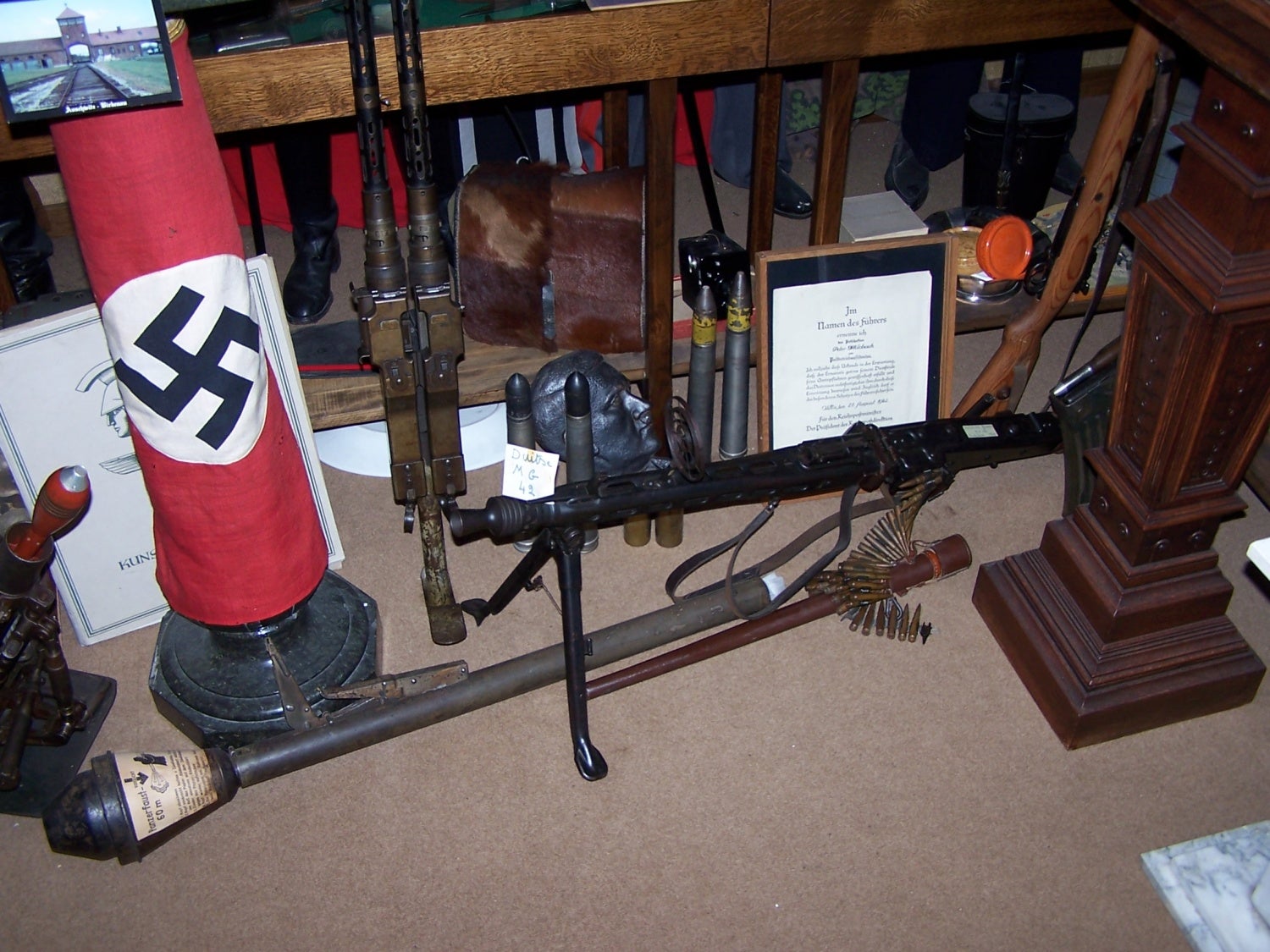
An MG42 and Panzerfaust lay in a corner, never facing the battlefield again. The machine gun on the left appears to be two MG13s mounted next to each other for anti aircraft use.
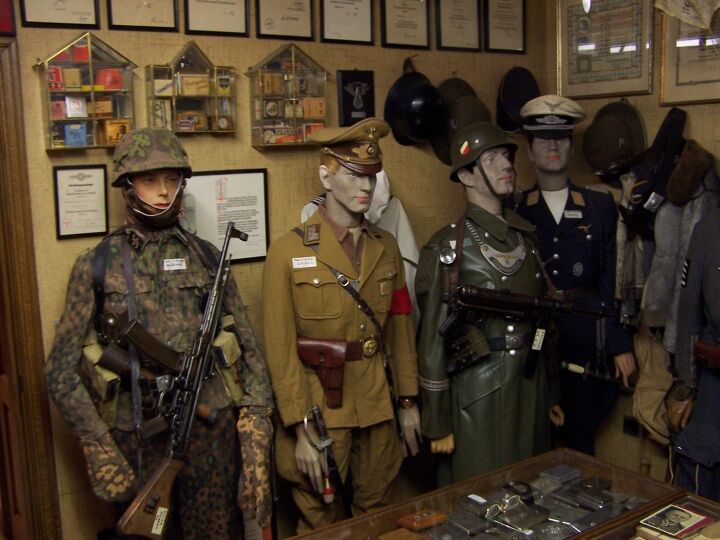
An array of German uniforms and armaments, Most interesting of which is the STG 44 on the right. It’s alright MP40, we care about you too.
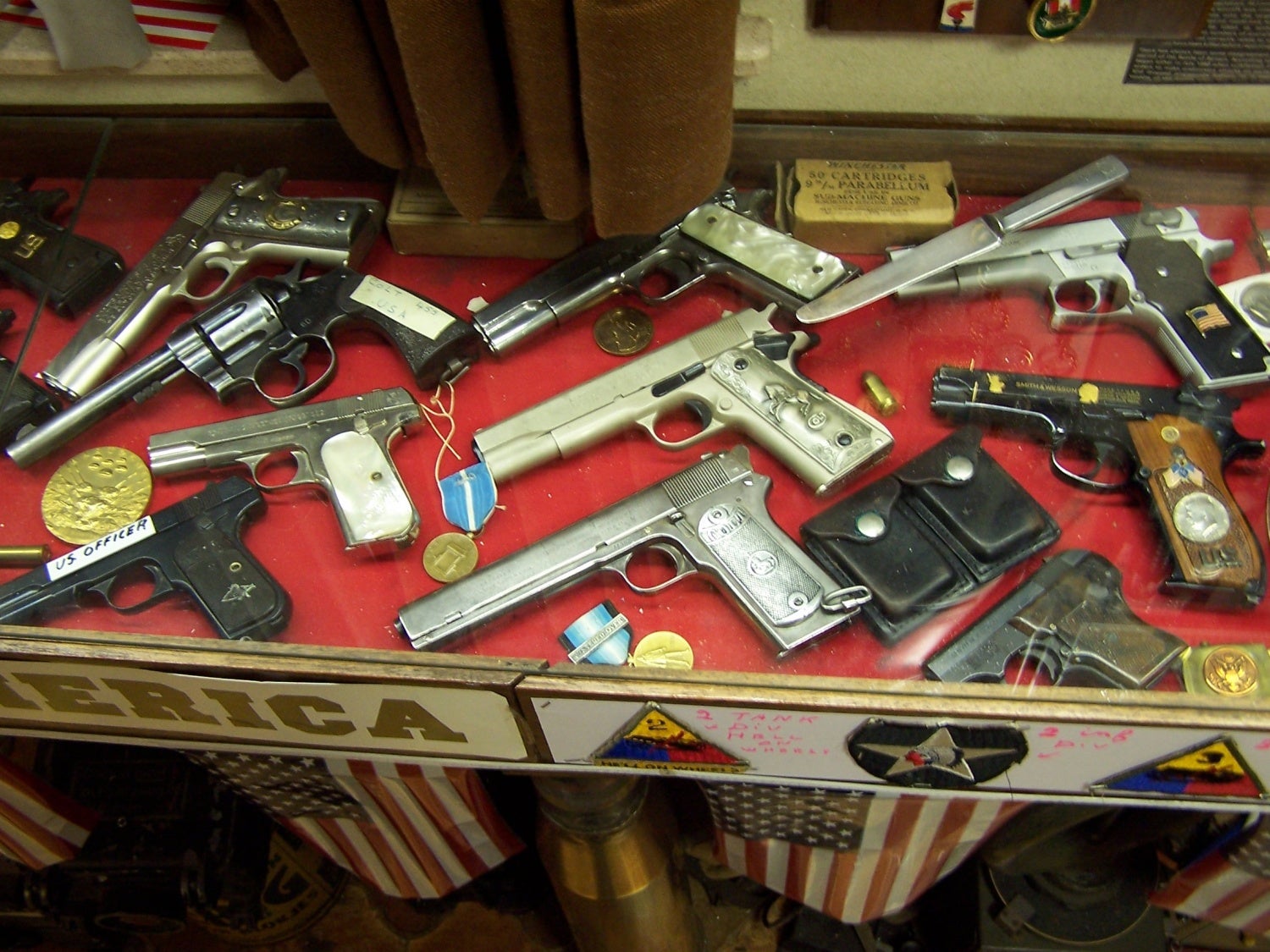
Various American designs ranging from early Colt Browning designs up to Smith & Wesson model 59s. Most of the collection is organized in themes, this one being American handguns.
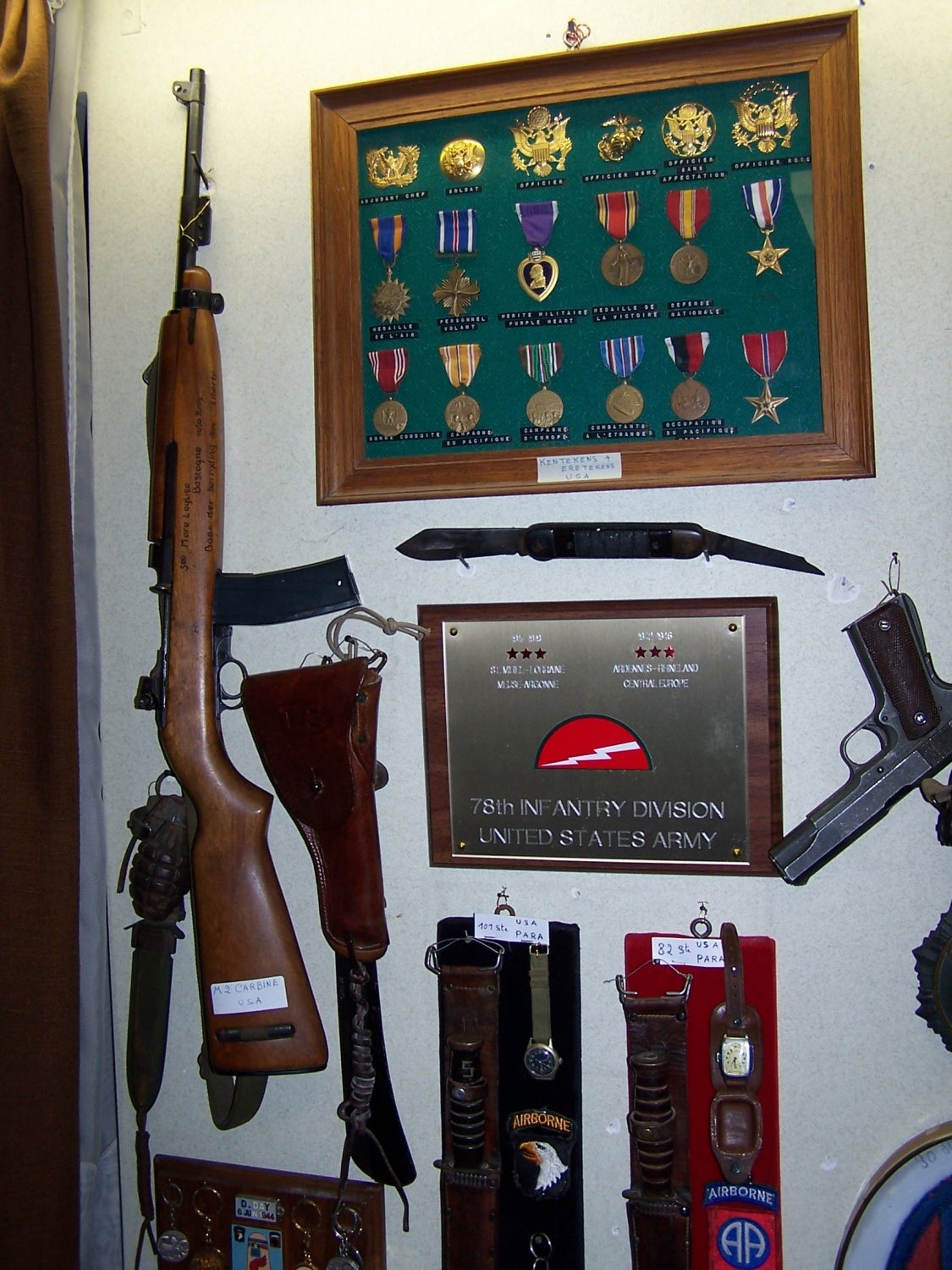
Various memorabilia associated with the 82nd and 101st Airborne Divisions of World War Two. The carbine is a fully automatic M2.
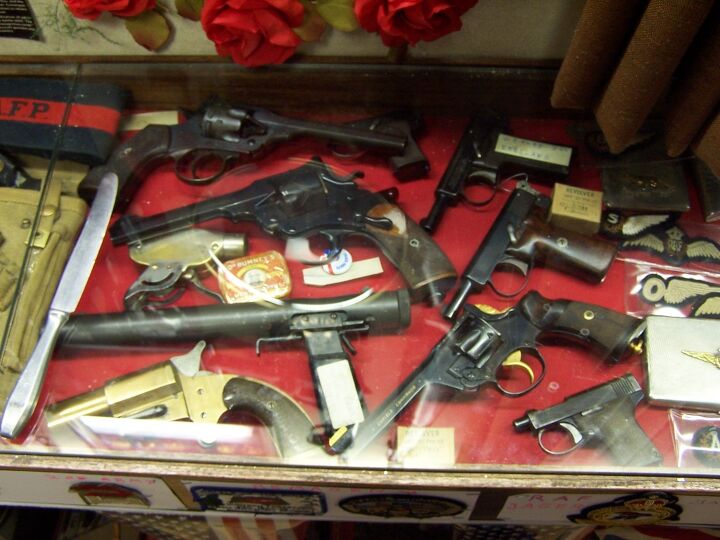
In this case, various British handguns are on display, from Enfields to signal pistols, Webley’s and the automatic Webley- Fosbery. most interesting in this collection is the Welrod suppressed pistol on the lower left.
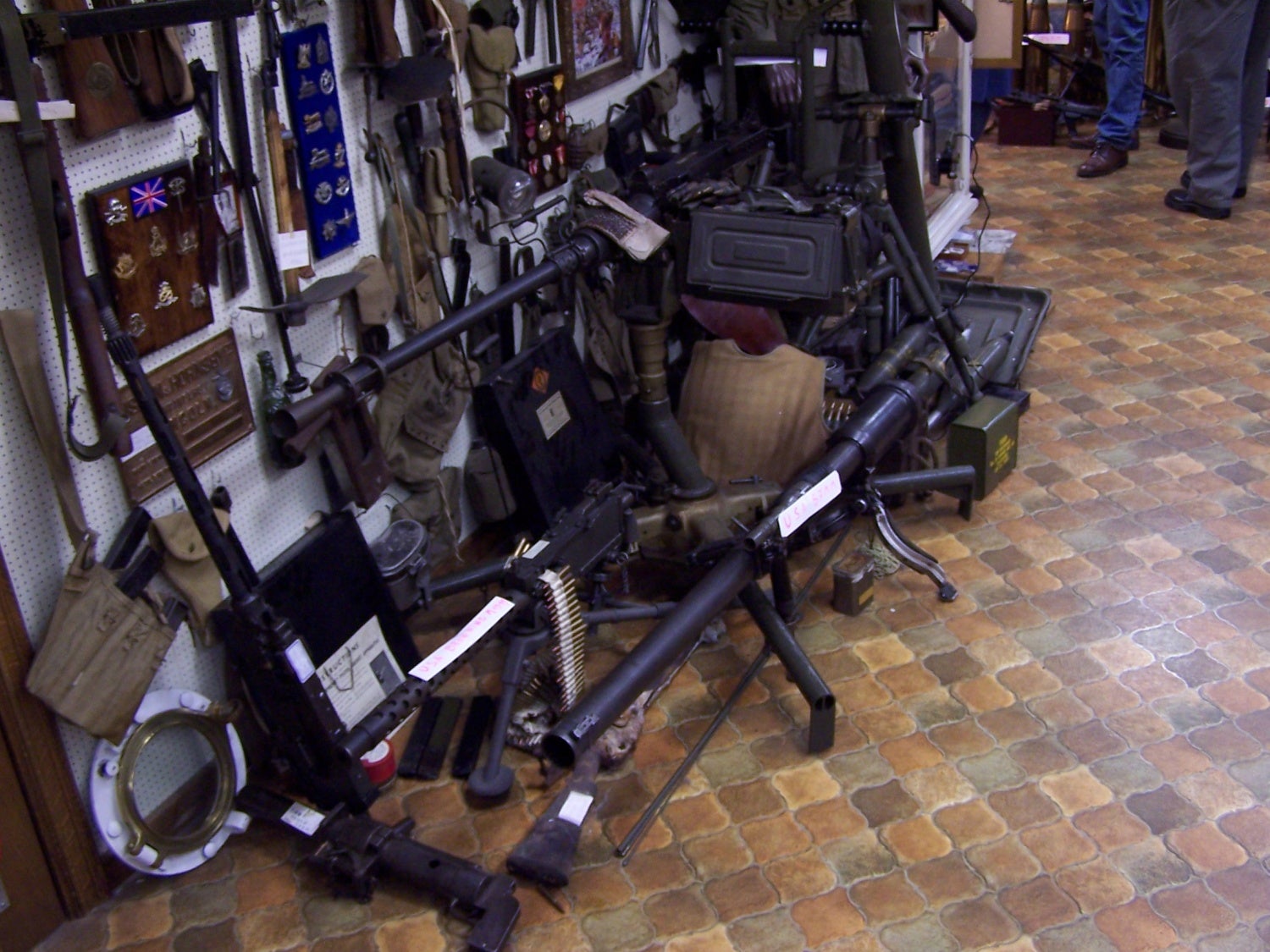
An M2 heavy machine gun, M1919 light machine gun, an M37 tank light machine gun, and a 2.36 inch recoilless rifle walk into a Bar, what happens? Well the BAR blows them all to bits because it’s loaded and the others aren’t. Regardless, this is a pretty interesting collection, but does anyone know what that tool is on the lower left?
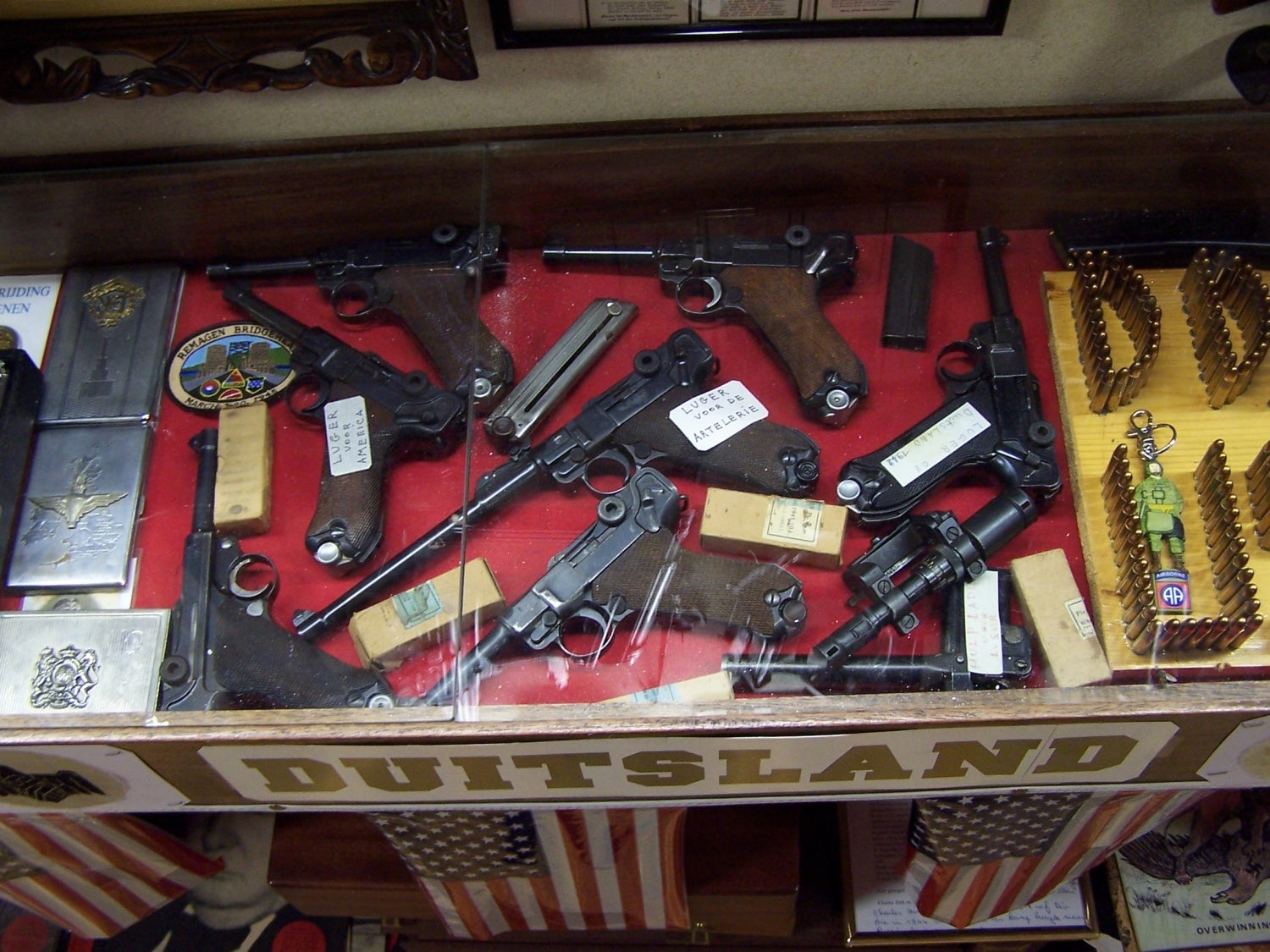
A German handgun display, most interesting is the “Artillery” Luger in the center with the longer barrel. Also notice the 98k marksman scope on the lower right.
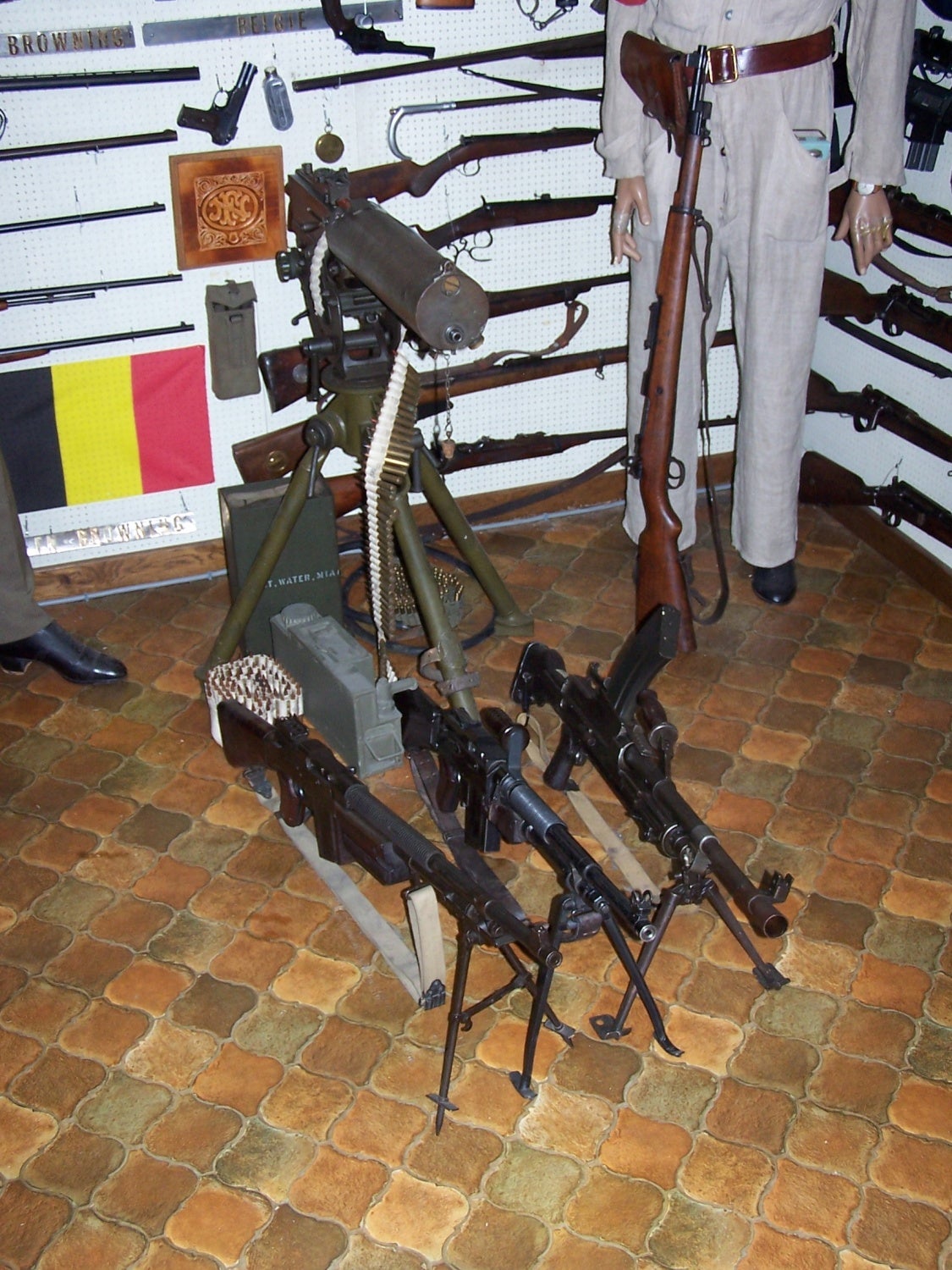
Various rifles in the background but more interesting are the light machine guns on the floor and an M1917 medium machine gun in the rear. The two rifles on the left are FN Model Ds, Belgian variants of the BAR. This seems to be the FN Herstal section as evidenced by the company logo on the wall. Although there is an AR rifle back there in the background.
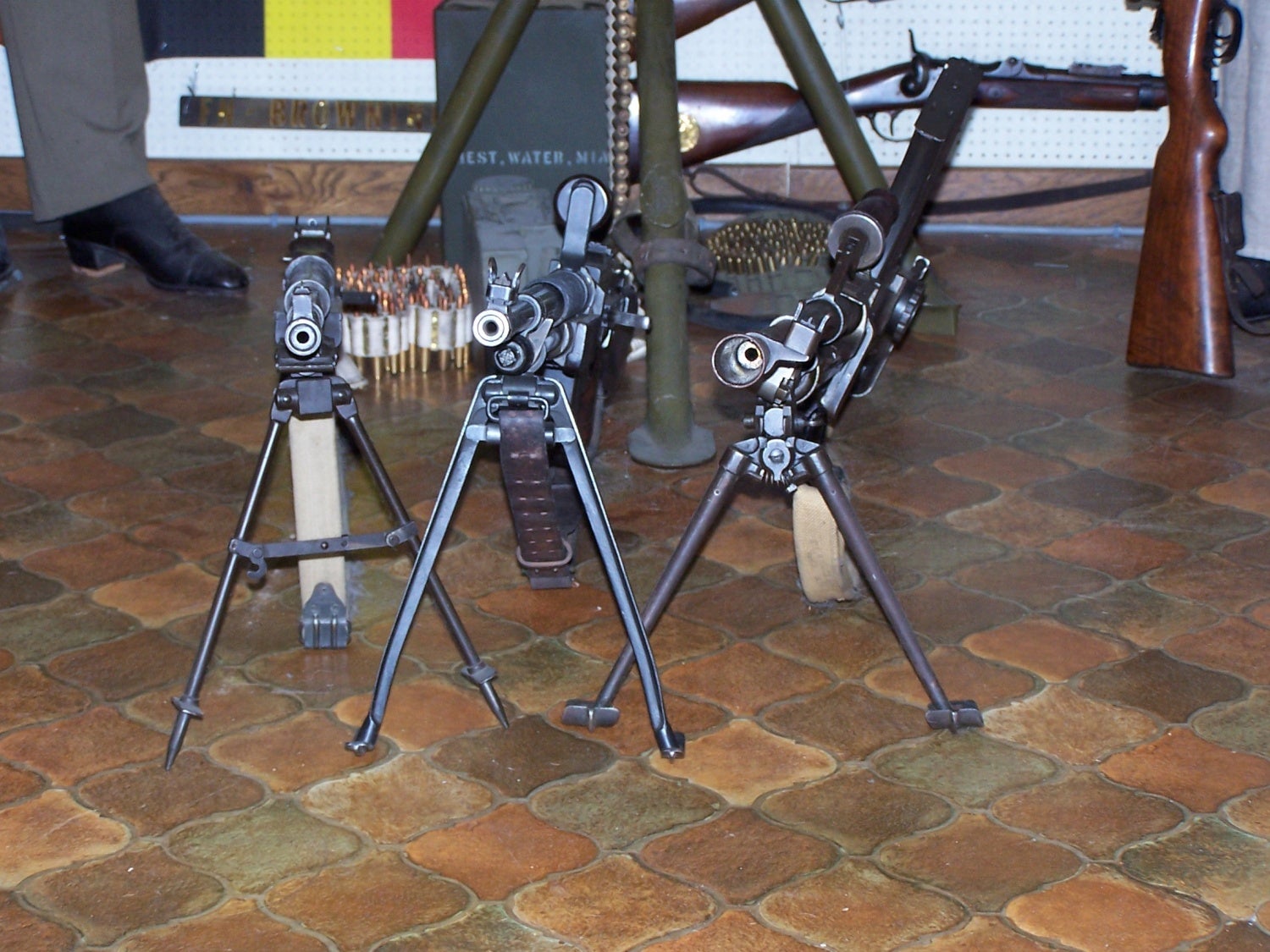
Another shot from the same area, this time showing the muzzle ends of the light machine guns. If any readers are familiar with the Versapod series of bipods, the Bren’s bipod bares an uncanny resemblance.
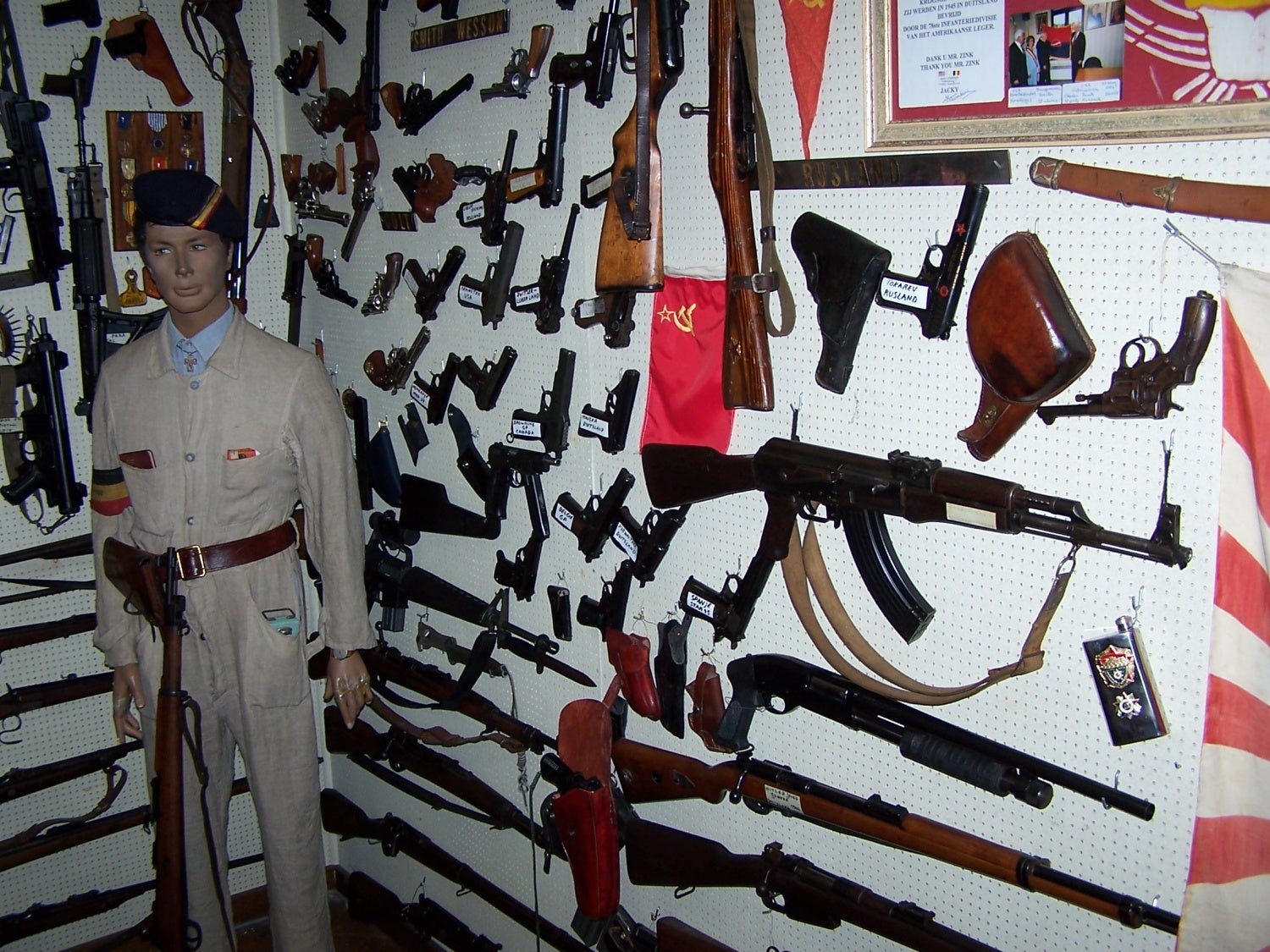
A varied assortment of firearms from Carcanos, a milled AK47, an M16A1 and a large assortment of various handguns too numerous to mention. But notice the Uzi, PM12, and FN CAL in the upper left. And what appears to be a CZ 75 with stock and magazine/grip in the center as well.

Back to the German section of firearms, the Artillery Luger is in it’s full configuration complete with snail drum magazine and lanyard. Once again, we count two STG 44s!
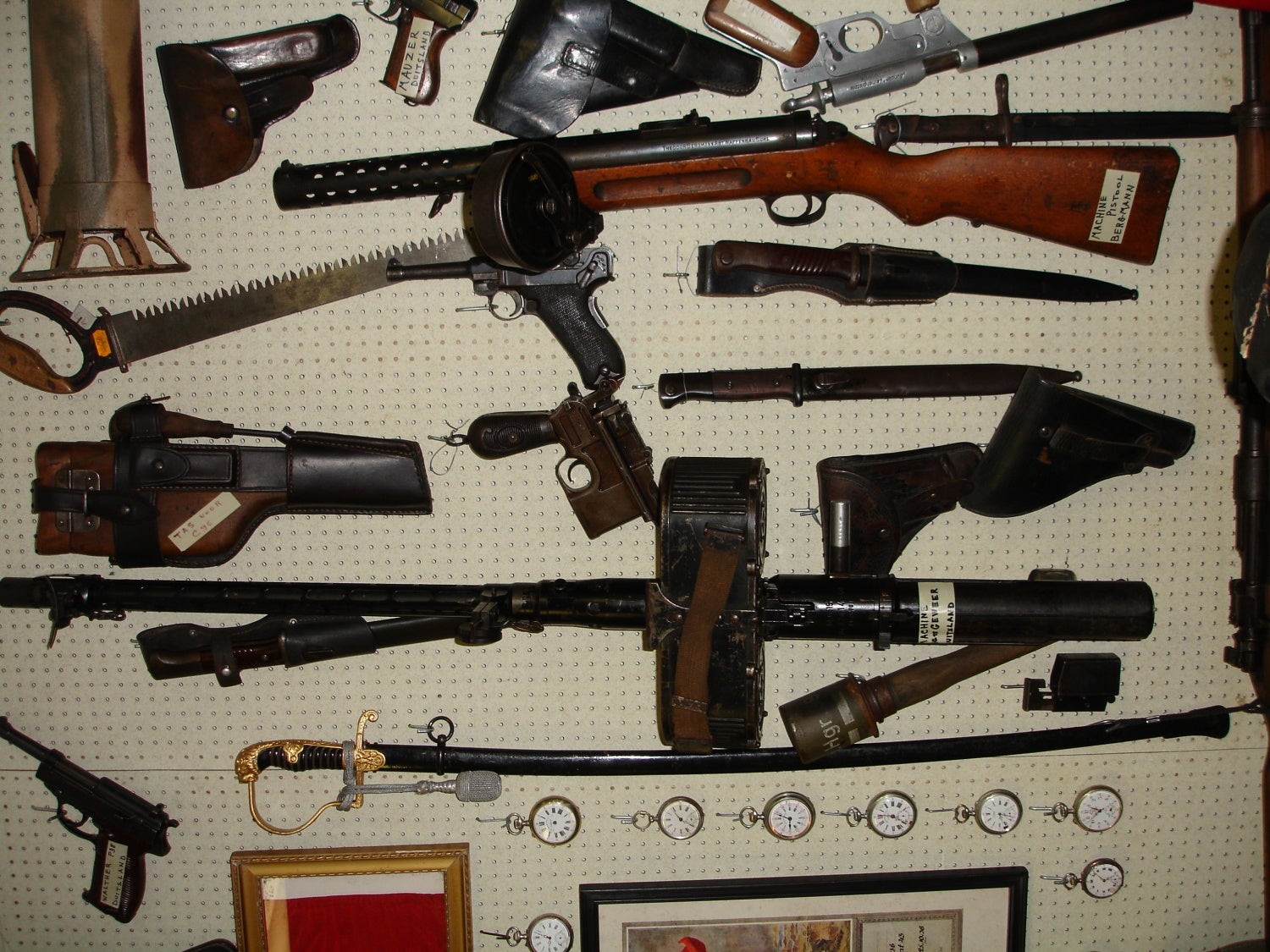
Some more German small arms, top left appears to be a Panzerschreck, top right looks to be some sort of competition small caliber pistol or even air pistol. Middle of the picture is an MG15, an early development that lead to the MG34 and 42 light machine guns.
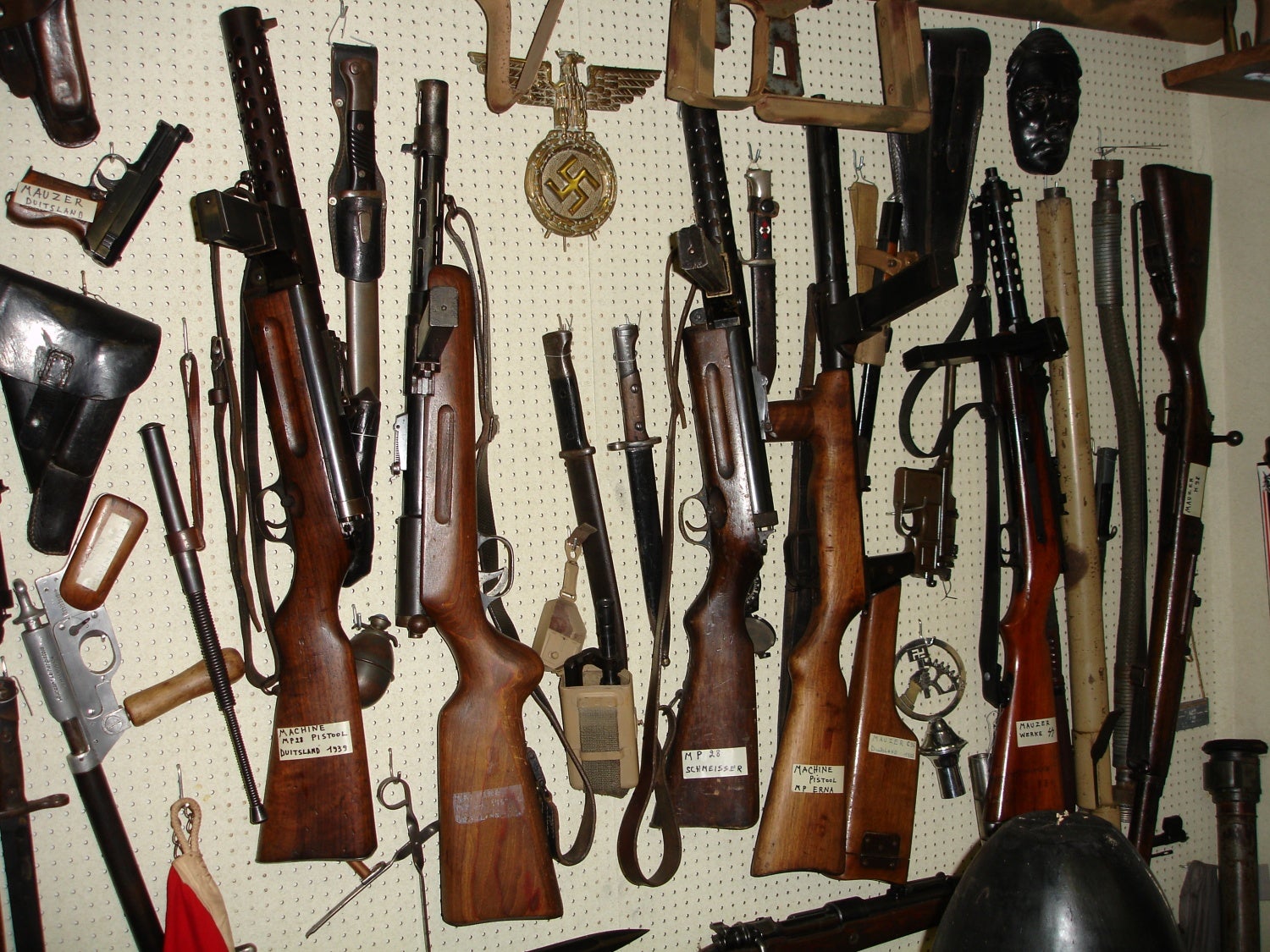
An array of German submachine guns, mostly MP18s and MP28s, but what is most interesting here is the Japanese Type 100 on the far right, a rare find indeed. Notice also there is another shot of the pistol seen in the previous photo, with the oddly shaped pistol grip
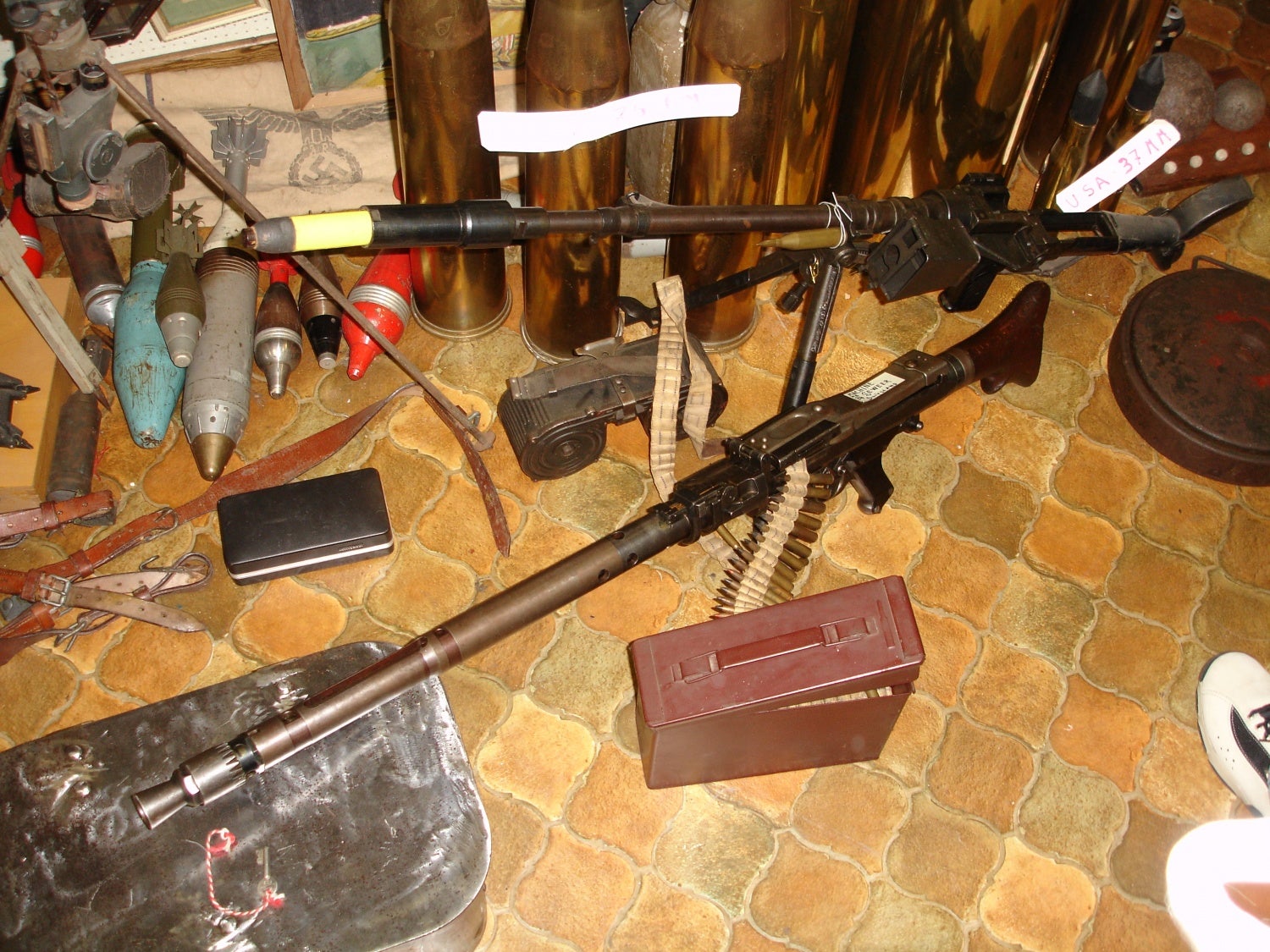
A very early, possibly an experimental prototype MG34? Or a standard MG34 without the standard barrel protector. It’s interesting to note that a citizen of Belgium, a country that suffered so much under Nazi control during World War Two, would have such a passion and place in his collection for memorabilia and small arms from that regime.
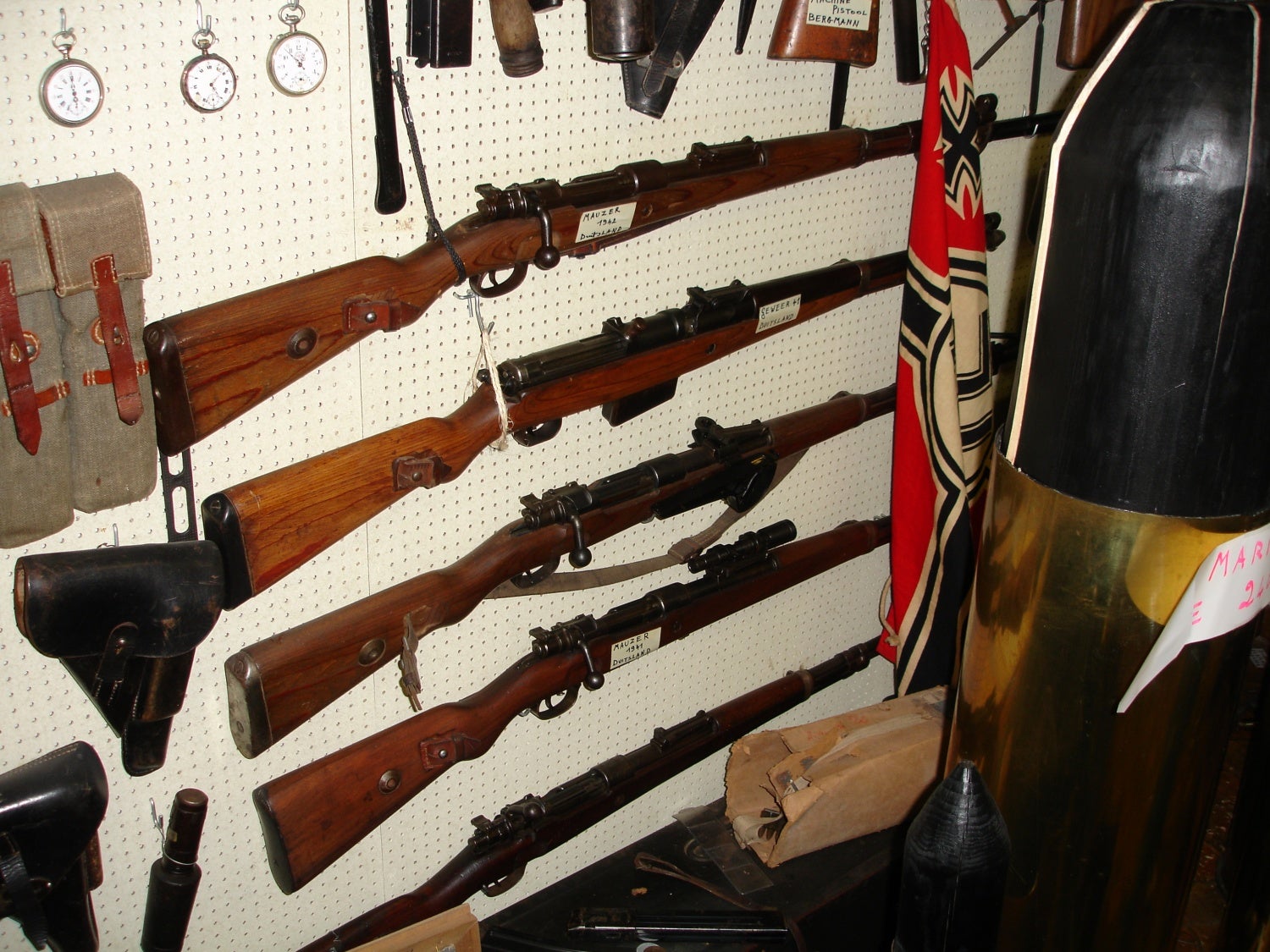
A selection of German rifles, mostly Mauser 98Ks but of note is the G41 self loading rifle in the center. Notice the designated marksman rifle second from bottom with the forward mounted scope.
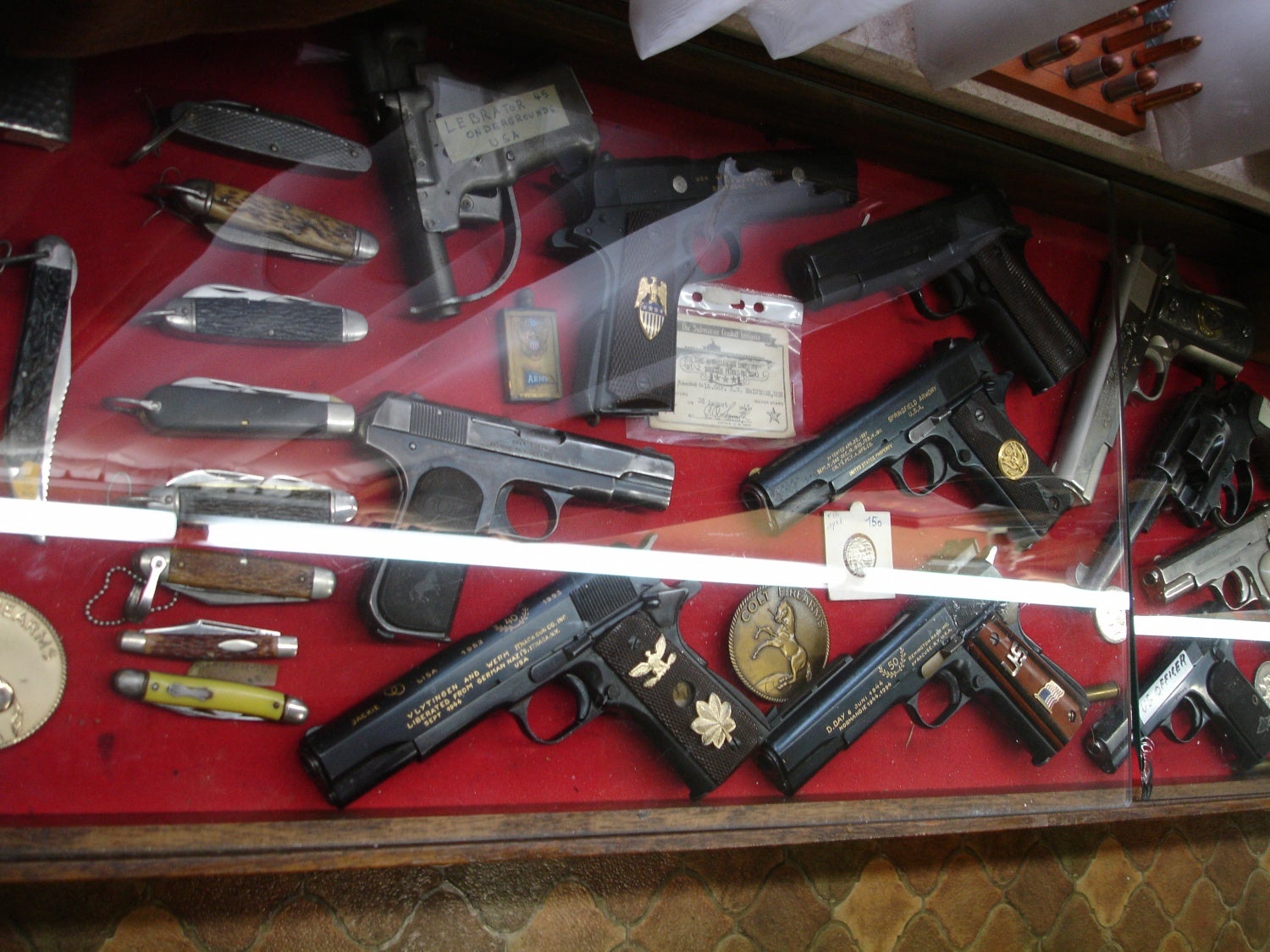
Commemorative 1911A1s. The one on the lower left might be a personal officers pistol as evidenced by the Lt. Col and Col rank on the grips, the 1911 one over to the right looks like a commemorative D-Day 1911 for the 50th Anniversary. But top left is a Liberator, probably the most increased value of all these handguns from when they were built.
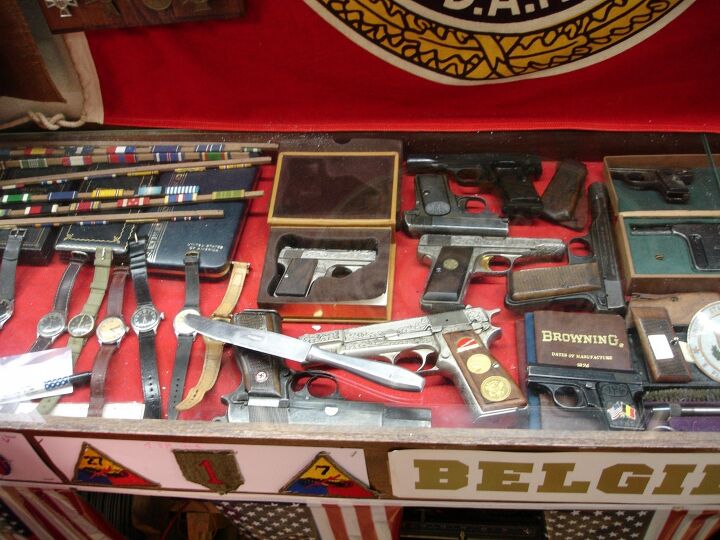
And of course, the Belgium edition of handguns, mostly Browning Hi Powers and earlier FN handgun designs, pocket pistols, and “Baby” Brownings.
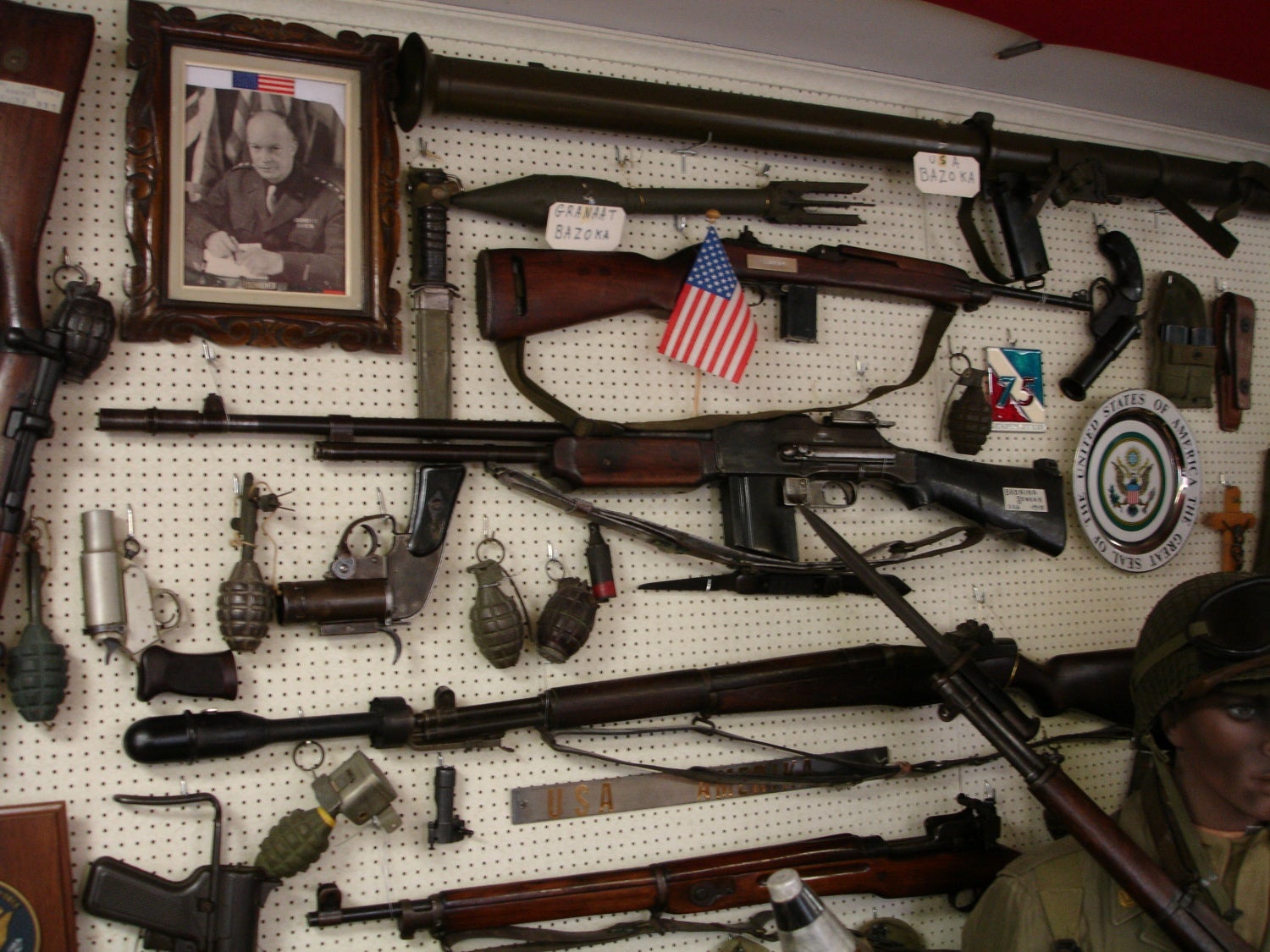
An American section is shown proudly with everything from Garands to BARs, and other small arms. Except for that No.1 Lee Enfield in the upper left corner…
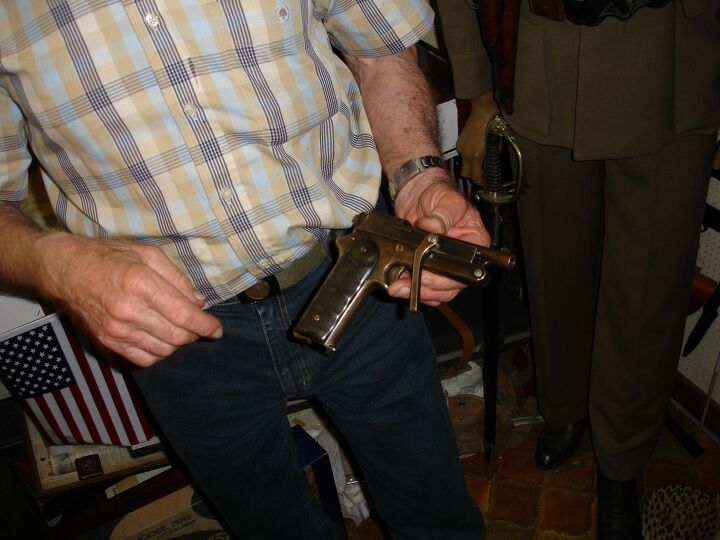
This is a JoLoAr semi automatic handgun that was made in Spain for mounted troops, so they could load their pistols one handed while on a horse. Needless to say, it didn’t do too well at all. There’s a good section about it over at Forgotten Weapons.
 Your Privacy Choices
Your Privacy Choices
